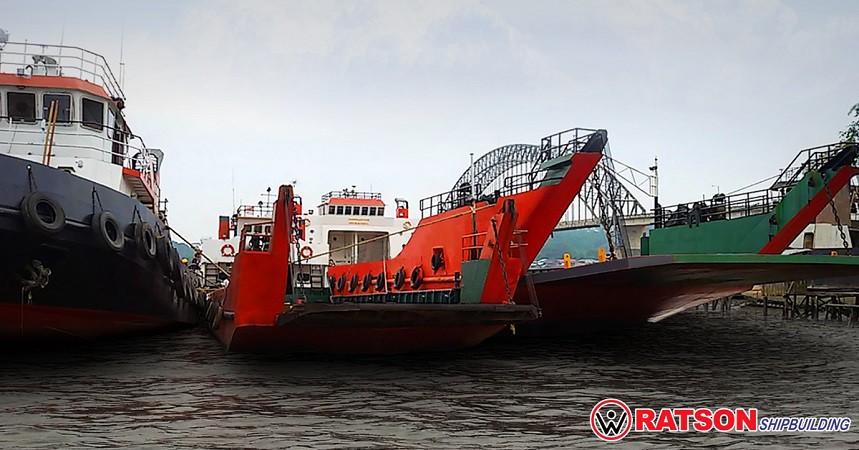
The lead time for building a landing craft tank depends on the size of the vessel as well as the equipment. As obvious as it supposed to be, the bigger the vessel, the longer it takes to build the vessel. The minimum time to build the vessel is mostly 6 months for 200 to 250 DWT vessel. For 500 DWT to 750 DWT vessel might take 8 to 10 months to build, while more than 750 DWT will take even more time. There are so many factors affecting the lead time of building a vessel such as the size of the vessel, the facility of that the shipyard has, the specification of the vessel, weather, and many others.
Almost the same with other construction processes, the vessel building process also need a proven drawing or in this case, the approval is given by the class requested. Before the vessel is built, the shipyard needs to come up with a preliminary general arrangement as for the design of the vessel. Once the buyer agreed that the shipyard to continue to make the general arrangement as well as other detail drawings and ask for the class approval. The shipyard needs to do the revision based on the input from the class and resubmit the design until it gets the approval from the class. This process usually takes 1 to 2 months depending on the complexity of the design as well as the class chosen as the class notation.
6 months is the minimum time to build a landing craft tank. The main reason for this is because of the main engine. In most cases, a shipyard doesn't have ready stock for the main engine because it is expensive and the spec might be different from the vessel that they want to build. Therefore, it takes more or less 6 months to import the main engine from the nearest country to Indonesia. The main engine that mostly used in Indonesia is Yanmar, Mitsubishi, and Caterpillar. However, depending on the buyer's demand, any shipyard can get the requested main engine with ease.
Different from building a house or any building construction, the construction process of building a vessel cannot be accelerated at will. This is happening because there is a welding process in the vessel building process. The work of the welding that is too long will make the mild steel deformed because of overheating. Therefore, for every working process, the worker needs to stop in a while to let the temperature of the steel back to normal before doing the welding process again. Else, there is a way to transfer the heat of the welding process from the mild steel which is to give water on the other side of the steel, however, this is also not really effective. Therefore, the construction process of a vessel will take more time than building a house or any building construction.
Furthermore, the lead time will take even more time if there is a necessary adjustment based on the result of the sea trial. After the vessel is ready to be launch, there is a test called a sea trial to ensure that the vessel is feasible to sailing and seaworthy. Based on that test, the shipyard will need to make an adjustment if necessary and conduct the sea trial once more until the vessel is ready to be operated and has the permission to sail.
Looking at this process, it is better for you to be well-prepared way before the day you need the vessel. Usually, the preparation and dealing process will take place 1 year before the completion of the vessel. Plan your business as well as your budget and choose the right partner to build your vessel. Remember that a vessel is not just an expense but an asset for your business.
Dredgers are important machines used for excavation and land reclamation in water bodies. They come in different shapes, sizes, and types, depending on the specific purpose they are designed for. I....
Pilot boats play a vital role in ensuring the safety and efficiency of maritime transportation. These boats are designed to transport pilots to and from ships that require their expertise in navig....
Self-propelled barges are vessels that are designed to transport large quantities of cargo on inland waterways. These barges are propelled by their own engines, making them highly efficient and cos....
Barge/ Dumb Barge A barge is a flat-bottomed boat that is designed to transport goods or people on inland waterways or near-shore locations. Dumb barges, also known as unpowered barges, are t....